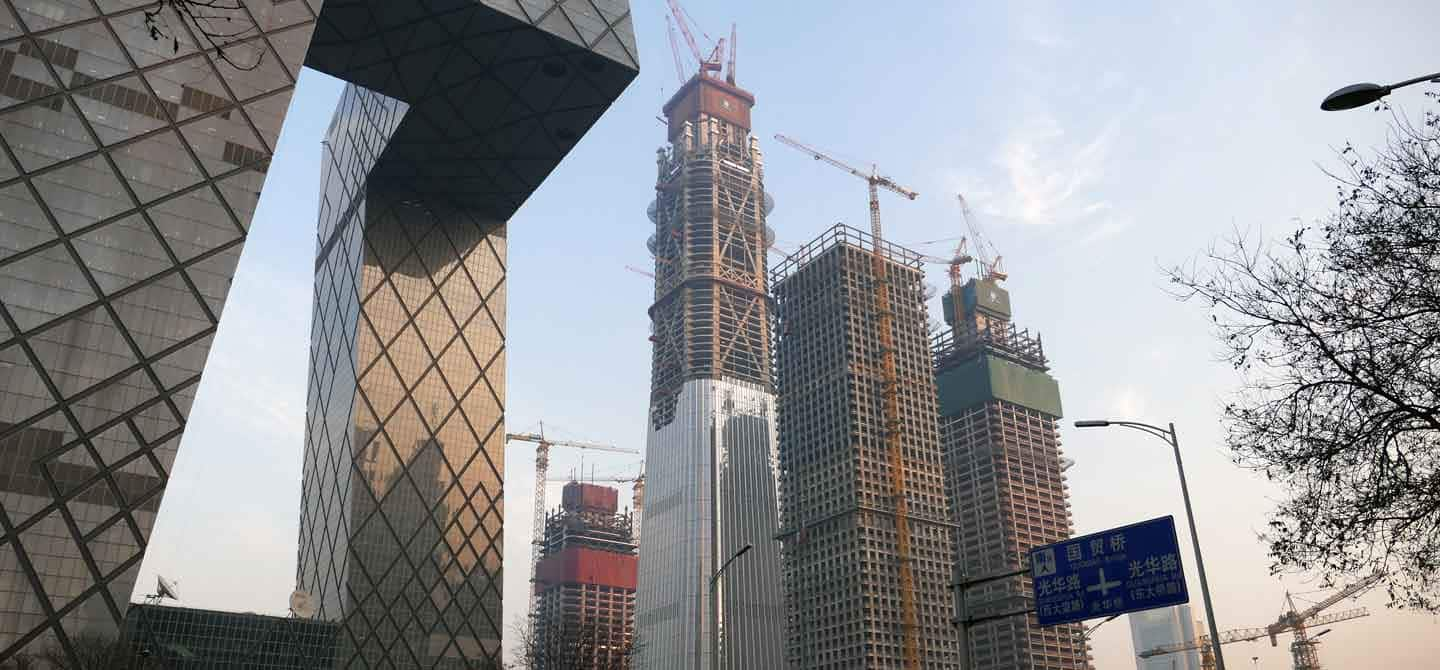In the heart of the bustling Beijing business district, thousands of construction workers are working on the contours of a building inspired by a Zun, an ancient Chinese wine vessel. The CITIC Tower, once completed, will stand 528-meters high comprising 108 floors.
“More than half the construction has been completed, and we are already the tallest building in Beijing,” exclaims Wang Wuren, Deputy Chairman and General Manager, Citic Heye Investment CO., LTD. “We started construction on the tower in 2013, and we will complete the tower in 2018. It is being constructed faster than other similar projects, which is very important from a profitability point of view.”
KONE’s JumpLift™ technology has a big role to play here. The technology helps shorten construction schedules by several months, which means quicker return on investment. How? Well, it uses a temporary machine room inside the permanent hoist way. Its self-climbing feature ‘jumps’ upward as the construction work progresses, and also reduces the downtime of elevator installation to a minimum. This is because when the building is complete, the JumpLift can be swiftly transformed into a permanent elevator.
The installation of the JumpLift has paid off big time for the developer, both in terms of costs and more importantly, time saved.
“My calculations show that we are saving about 320,000 work hours per year at CITIC Tower, which is a big saving,” says Wuren.
TAKING IT TO THE NEXT LEVEL
Wuren is right. Since JumpLift is also used to move men and materials in a way that’s faster, safer and more economical, it has a cascading effect on traffic capacity, improving people and material flow efficiency by between 15% and over 50%.
“I’ve traveled to America, worked on big projects in Shanghai and seen how essential vertical transportation solutions for workers in a high-rise building are. But it is expensive to install that many elevators,” says Wang Wuren pragmatically. “For example,” he continues, “a contractor might use around 35 elevators to shift workers and material around, and they would have to alter it each time to suit construction, which of course means more costs.”
But the problem was duly addressed. For a project the size of CITIC Tower, which employs between 2,000 to 4,000 at peak times, the JumpLift system was the need of the hour.
“Thanks to JumpLift, we only need to use about 10 elevators now during the construction phase,” says Wuren. Chan Kwok Leung, Project Director, Major Projects, KONE China is very pleased with Wuren’s choice. “The JumpLift is indeed a very efficient solution for high-rise buildings such as CITIC Tower,” he says mindful of the growing popularity of the technology.
Wuren agrees. He is quick to acknowledge the fact that JumpLift is the workers’ preferred choice, on site, owing to its reputation of being safer and faster.
TRAVELING LIGHT
Another KONE technology driving CITIC Tower height is UltraRope® – a super-light rope with a carbon-fiber core and special high-friction coating. UltraRope is superior to conventional steel cables in every way. It reduces weights by up to 80% allowing elevators to move farther and faster than ever before.
“11 units at CITIC Tower will be equipped with the UltraRope system. This technology will dramatically reduce the moving mass of the elevator and provide several efficiencies that are beneficial to the customer,” says Kwok Leung at KONE.
Wuren, too, is all praises. “In terms of firefighting, UltraRope is more durable and it lasts two to three times longer than steel cables,” he says.
“Add to this, the savings in electricity because of the reduced weight and it becomes more competitive. Therefore, I made the decision to use UltraRope in CITIC Tower,” he concludes with confidence.
CITIC Tower is setting a beaming example for other up and coming skyscrapers in the country. A report by the Council of Tall Buildings and Urban Habitats (CTBUH) states China dominated the world, ninth time in a row in 2016, in building skyscrapers. With the growing popularity of technologies such as JumpLift and UltraRope, it would be no surprise if China leads the pack this year, as well.
